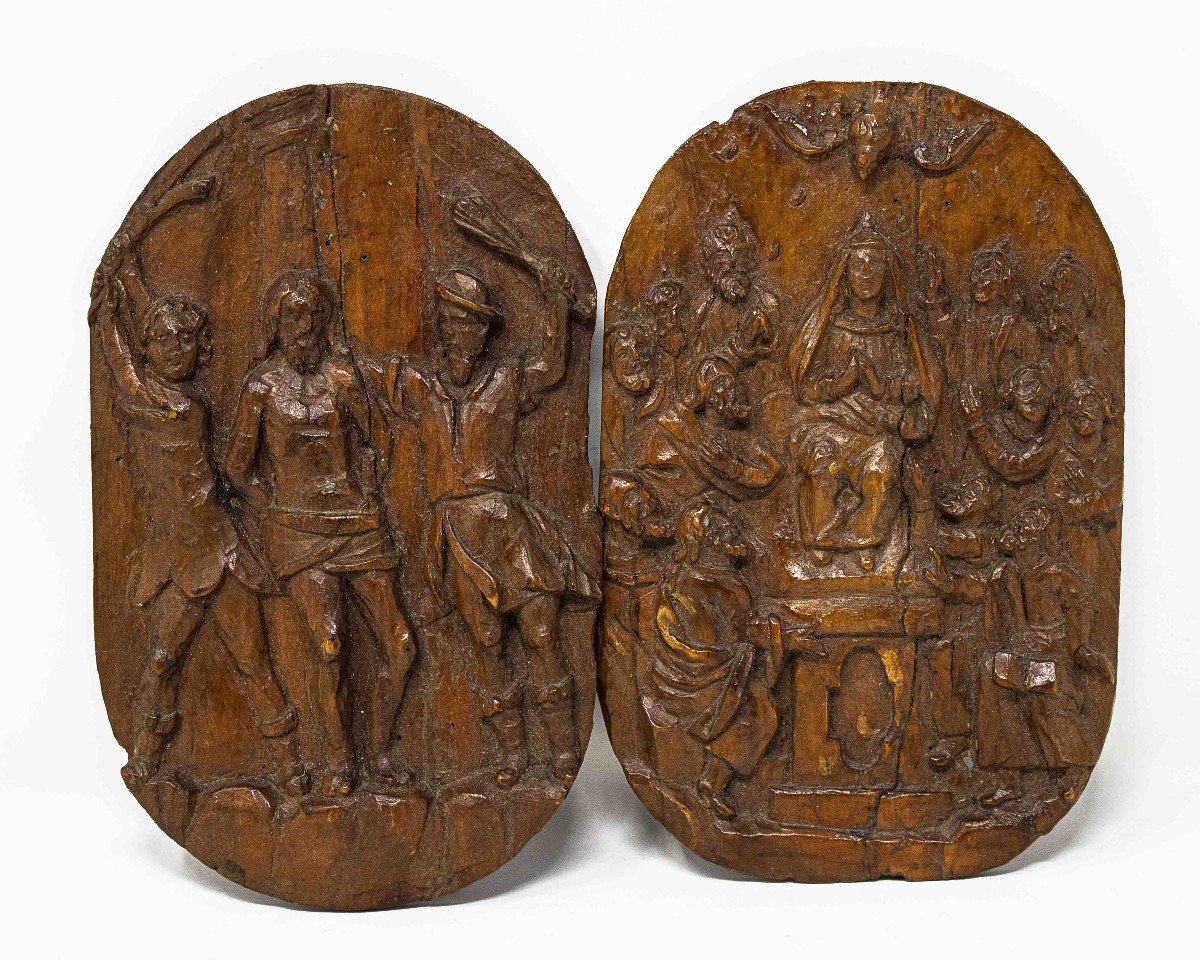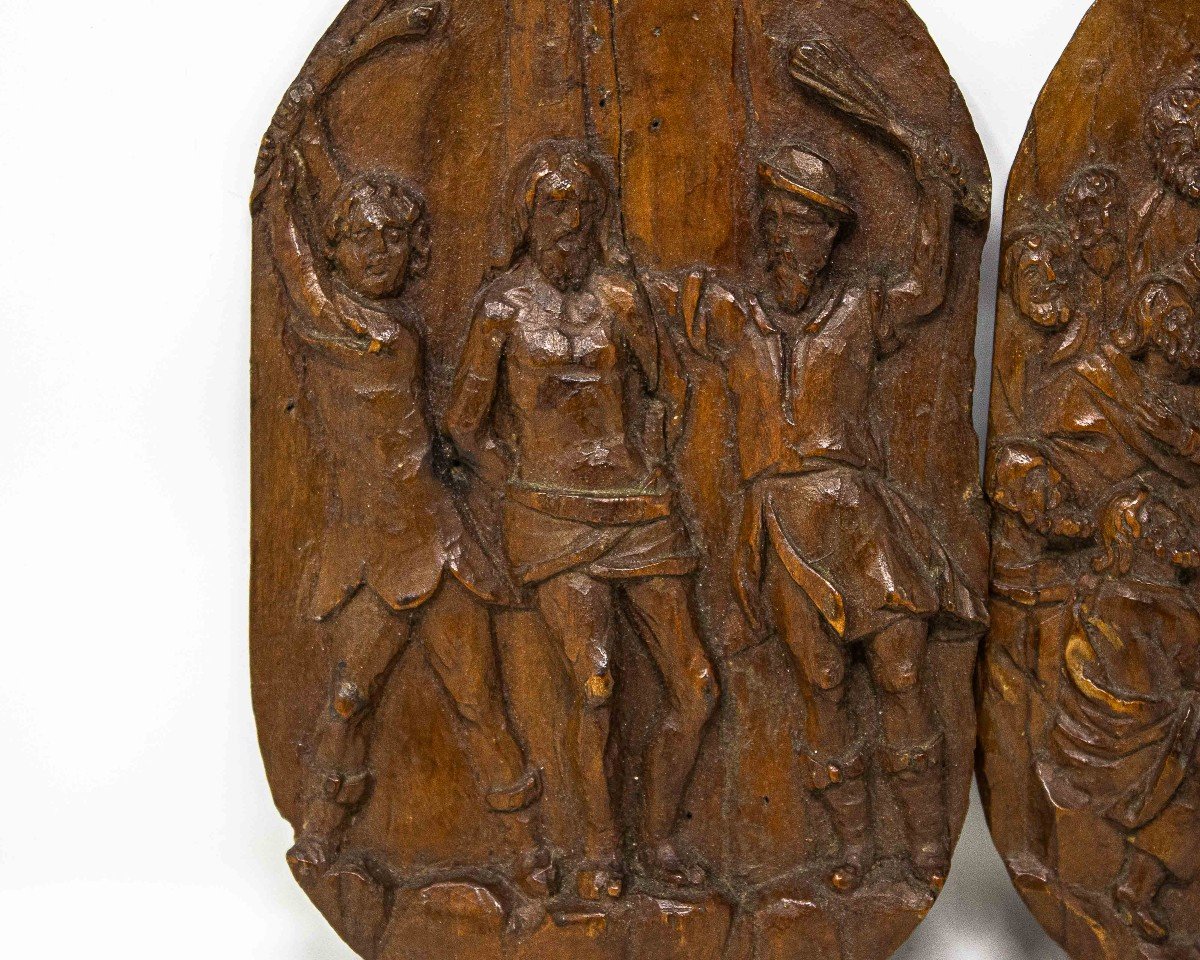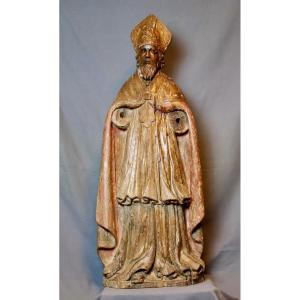Pentecost and the Flagellation of Christ
Two plates carved pear wood, cm 16 x 10.5; cm 17 x 10.5
The two works, subject of this exhibition, are presented as two plates of pear wood, carved with great skill, depicting religious scenes. The first plaque depicts Pentecost, an episode narrated in the Acts of the Apostles (2,1-11) according to which one day the Holy Spirit came down on the Apostles in the form of tongues of fire, all gathered in the same place, each of whom began to speak a different language. Although from this reading it is deduced that the Spirit was bestowed through the risen Christ, in the depictions of the episode he never appears. Generally, the tongues of fire are represented in the form of flames, as in our work, placed on the head of the apostles and coming from a dove at the top, in the center of the composition, symbol of the Holy Spirit. The frequent presence of the Madonna in the center of the scene, among the Apostles, does not represent a literal reconstruction of the story, in which it is not mentioned, but a theological assumption that has spread among artists over the centuries, Linking the episode of Pentecost to the previous one, in which it is said that the Apostles prayed together with other women, including Our Lady. The Virgin in this case assumes a symbolic value, representing the Church, of which the Apostles are the messengers, as with the Ascension, In fact, the Virgin, as you can see on the plaque, is placed in a raised position and central on a throne, with his hands joined, covered by the veil and with his eyes turned towards the dove. Thus the superiority of the woman is emphasized over the twelve Apostles, who are caught in different and agitated poses that recall the moment when they received the gift of the Spirit and began to speak all together different languages. Going down in more detail, the artist with great skill has carefully carved low relief the robes and mantles of the apostles, placed transversely on the bust, not leaving out the bearded faces, hands and even a prayer book placed on the knees of the apostle on the right. In addition, the floor of the room and the throne base with central relief have also been completed. The second plaque presents a crucial scene of the passion of Jesus Christ, narrated in the Gospels: the flagellation, also called Christ at the column. According to the story, after being condemned to crucifixion, the son of God was first stripped of his robe and left with a white thong, then tied to a marble column and violently beaten with rods by some torturers. Looking at the plaque, the Christ, as usually happens in the iconography of the scene, is depicted in the center, leaning on a classical column, in a monumental pose to emphasize its statuary beauty, while the two sgherri on the sides, who raise their rods with violence, ready to strike him, have more crude faces in such a way as to allude to their brutality and ferocity. In this case too, the artist makes relief of the bodies and details, especially the draperies of the tunics, expertly carved, without forgetting the protruding base depicting the bare ground, on which the three characters rest firmly. he laying of arms, the double tip of the beard and the hair resting on the shoulders of the Christ can be traced to a central model for such iconography: the Christ at the column of Bramante (1480-1490), preserved in the Pinacoteca di Brera in Milan. Both plates are composed by playing on different levels, from the most crushed, as the column, to the most prominent as the bodies of the protagonists, thus making space.
The object is in good condition






































 Le Magazine de PROANTIC
Le Magazine de PROANTIC TRÉSORS Magazine
TRÉSORS Magazine Rivista Artiquariato
Rivista Artiquariato